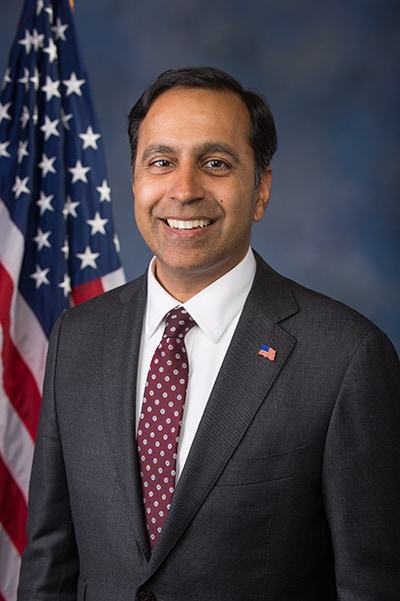 New legislation will be introduced in Congress that would cap the amount of nicotine in e-cigarettes to combat their use among young people.
New legislation will be introduced in Congress that would cap the amount of nicotine in e-cigarettes to combat their use among young people.
Concentrations to Be Capped at 20 Milligrams Per Milliliter
On October 7, 2019, Rep. Raja Krishnamoorthi announced the introduction of the END ENDS Act. The proposed legislation would cap e-cigarette nicotine concentrations at 20 milligrams per milliliter or “any lower level deemed minimally addictive or non-addictive by the FDA,” said Krishnamoorthi at a City Club of Chicago luncheon.
According to Krishnamoorthi, similar caps that have been enacted in the United Kingdom, the European Union, and Israel have helped stem the tide of youth vaping in those countries.
“This nicotine cap has had a direct impact in deterring youth vaping,” Krishnamoorthi said. “My bill presents a common-sense solution that has already shown success abroad.”
This bill comes amid a rising death toll from vaping-related lung and respiratory illnesses, which currently stands at 18 deaths nationwide. Health officials are warning that vaping has become an epidemic among teens in particular. According to the FDA, 27.5 percent of American high school students currently use e-cigarettes – a 135 percent increase in the last two years. In contrast, less than five percent of youth in the United Kingdom are vaping.
Current E-Cigarettes Have Higher Nicotine Levels
The widespread adoption of e-cigarettes may be driven by their rising nicotine levels. Before 2016, most e-cigarettes contained between 10 and 20 milligrams of nicotine per milliliter. Today’s “fourth-generation e-cigarette devices,” however, are significantly more addictive, containing three times the nicotine content of previous generations.
“Juuls and other e-cigarettes in the U.S. contain as much as 59 milligrams of nicotine per milliliter of e-liquid,” said Krishnamoorthi.
The rise in nicotine concentrations has been facilitated by the advent of “nicotine salts” that mask nicotine’s naturally unpleasant taste by combining the basic chemical with an organic acid.
“The nicotine level in recent e-cigarette products is extremely high and very addictive,” said Dr. Anne Schuchat, the principal deputy director of the Centers for Disease Control and Prevention. “The nicotine salts that are used in the more recent generations of e-cigarettes make the product very palatable.”
Krishnamoorthi cited studies by The New England Journal of Medicine showing that adolescents are less likely to start vaping when e-cigarette pods contain less nicotine.
Juul is the leading e-cigarette brand in the United States. The company controls around 75 percent of the American vaping market. Juul has denied marketing its products to young people, claiming that its e-cigarettes offer an alternative for adults seeking to quit smoking and tobacco products. But amidst the current wave of vaping-related illnesses, Juul has said that it would halt its advertising and not fight a proposed ban on flavored vaping products.
Critics argue that flavored vaping products overwhelmingly appeal to the young. In addition to the flavored tobacco pods, health officials claim that teenagers may also be attracted to Juul’s colorful packaging, clever social media campaigns featuring paid “influencers,” and vaping devices designed to look like USB flash drives.
Regardless of other aspects that may appeal to young people, Krishnamoorthi insists that “Capping the concentration of nicotine in e-cigarettes is integral to ending the youth vaping epidemic by making these products less addictive, less appealing to youth, and less harmful to public health.
“After all,” he added, “while flavors hook kids, it’s nicotine that nets them and pulls them on the boat into a lifelong vaping habit and addiction.”
<< BACK TO BLOG POSTS